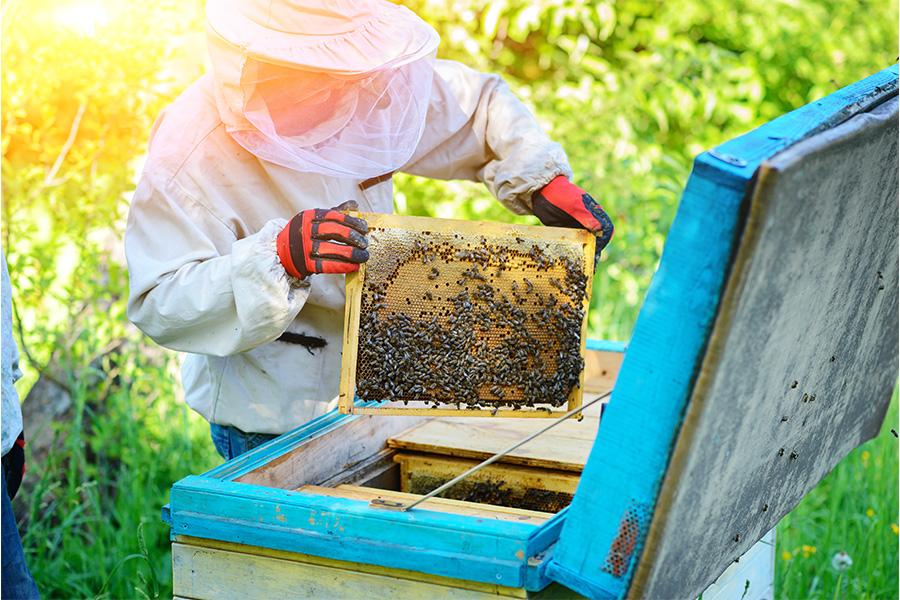Entomology
-

Silverleaf whitefly (SLWF) is a major pest of agriculture in Georgia requiring management in vegetable and agronomic cropping systems to preserve yield and quality. Our greatest opportunity for impacting the severity of SLWF infestations is to minimize overall SLWF populations moving from one cropping system to the next. This can be accomplished with effective in crop management and timely termination of crops after harvest to minimize the population over time. SLWF populations increase during the year and management within each cropping system significantly impacts subsequent cropping systems. It is important that SLWF management is a priority in all crops that serve as reproductive hosts. Cross-commodity cooperation and management with the objective of minimizing overall SLWF populations will benefit all of Georgia agriculture.
Phillip Marion Roberts, David G Riley, Alton N Sparks, Apurba Barman, and Michael D Toews
|
-

Georgia ranks in the nation’s top 10 in cowpea (southern pea, Vigna unguiculata) production, with estimates of more than 4,900 acres grown in approximately 49 of 159 counties in the state in the 2014 production season. Colquitt County, located in southwest Georgia, leads the state in production with 1,900 acres. This cowpea crop profile is the first in the Southeast United States and will support cowpea growers, pest manager, and state research and Extension grant proposal applications.
Ronald D. Gitaitis, Timothy Lane Grey, David G Riley, Esendugue Greg Fonsah, Alton N Sparks, Timothy Coolong, Jason Schmidt, Bhabesh Dutta, and Michael D Toews
|
-

B 1045
Honey Bees and Beekeeping
Honey bees are commonly kept in artificial hives throughout the United States, and a large and sophisticated beekeeping industry provides valuable honey, beeswax and pollination services. A large section of the industry, well represented in Georgia, is devoted to mass-producing queens and bees for sale to other beekeepers.
Keith S Delaplane
|
-

Currently, most construction waste is put in dumpsters and taken to a construction and demolition (C&D) landfill. However, several residential construction wastes can be recycled or reused as part of a “green” building practice. These include cardboard, metals, scrap wallboard, and wood waste. This publication provides you the information you need for on-site reuse of wood wastes at a residential construction site.
Brian T. Forschler, Julia W. Gaskin, and L. Mark Risse
|
-

The diamondback moth is a common pest of crops including cabbage, collards, turnip greens, mustard greens, broccoli, cauliflower and other leafy greens.
This insect has a long history of becoming resistant to insecticides beginning with DDT in 1953. Since then, DBM has become resistant to each new class of insecticide arriving to the market whenever those insecticides were used intensively and repeatedly to control a DBM population.
Prevention is critical. To delay the onset of resistance follow the practices listed in this circular. Even if resistance is detected in an area, these tips can inhibit its spread and preserve insecticide effectiveness.
David G Riley and Alton N Sparks
|
-

SB 63-10
2016 Tobacco Research Report
This report contains the most recent results of tobacco research programs at the University of Georgia in 2016.
Anna K Watson
|
-

B 1290
Africanized Honey Bees
Honey bees are among the most well-known and economically important insects. They produce honey and beeswax, and pollinate many crops. In spite of the alarm surrounding Africanization, these bees have not caused widespread or permanent chaos. Dramatic stinging incidents do occur, but the quality of life for most people is unaffected. Typically, the commercial beekeeping industries of Africanized areas suffer temporary decline and then eventually recover.
Keith S Delaplane
|
-

SB 63-9
2015 Tobacco Research Report
This report contains the most recent results of tobacco research programs at the University of Georgia in 2015.
Alexander S. Csinos, Ronald D. Gitaitis, Bhabesh Dutta, Unessee Hargett, and Anna K Watson
|
-

SB 63-8
2014 Tobacco Research Report
This report contains the most results of tobacco research programs at the University of Georgia in 2014.
Alexander S. Csinos, Ronald D. Gitaitis, J.Michael Moore, Eric R. Goodwin, Rajagopalbabu (Babu) Srinivasan, Bhabesh Dutta, Unessee Hargett, Stevan S. LaHue, Stanley K. Diffie, Lara Lee Hickman, and Anna K Watson
|